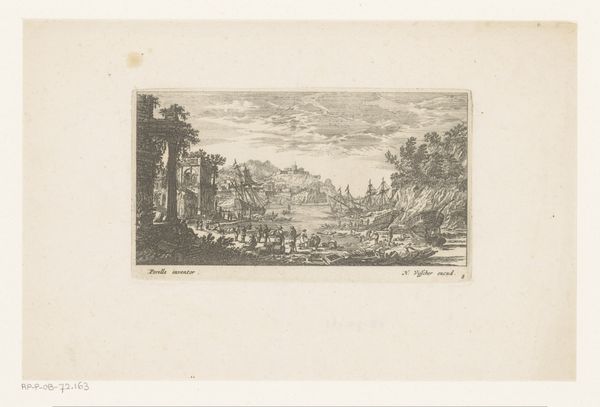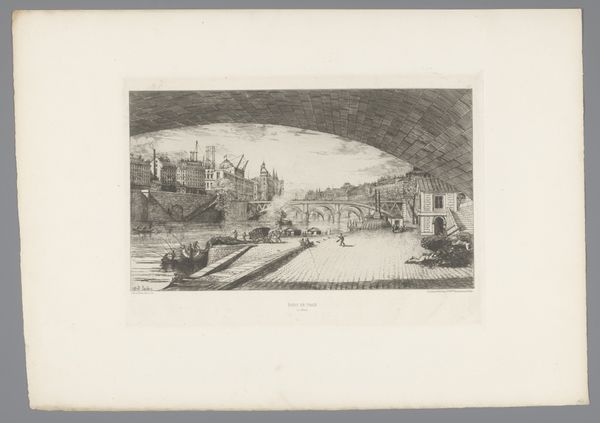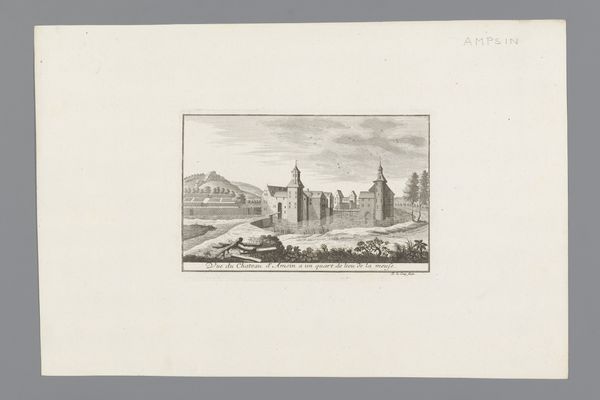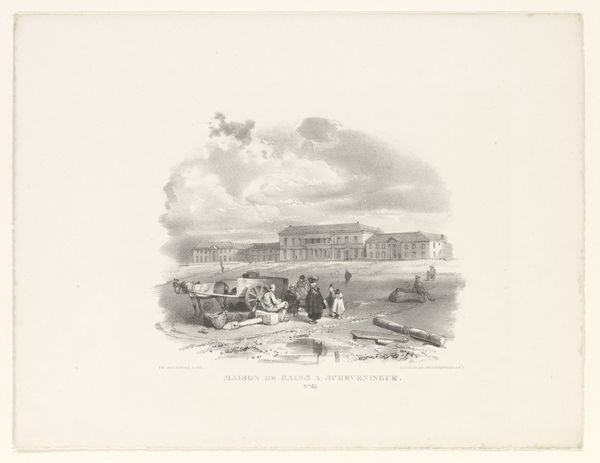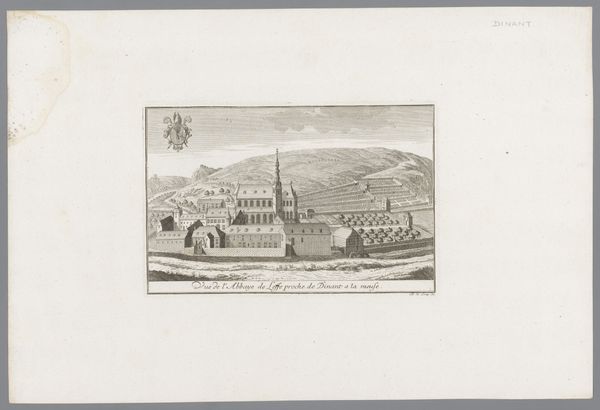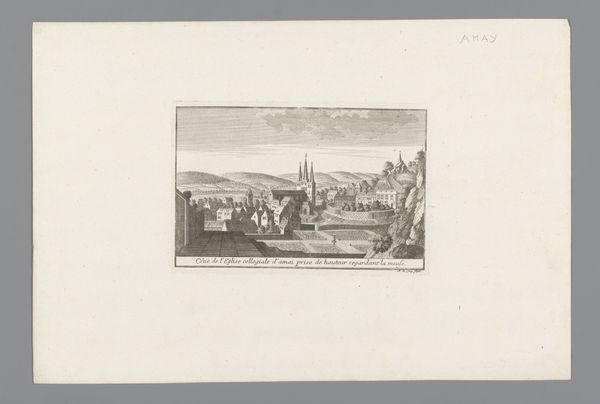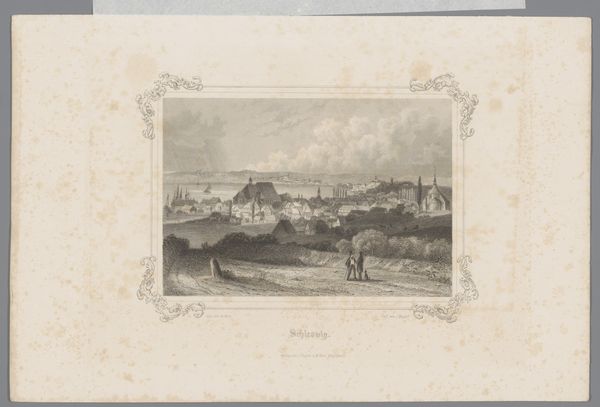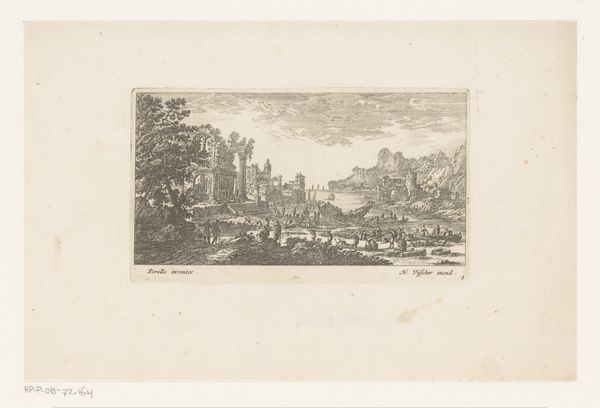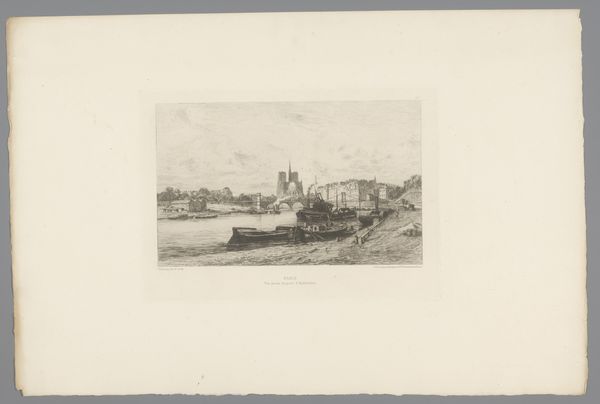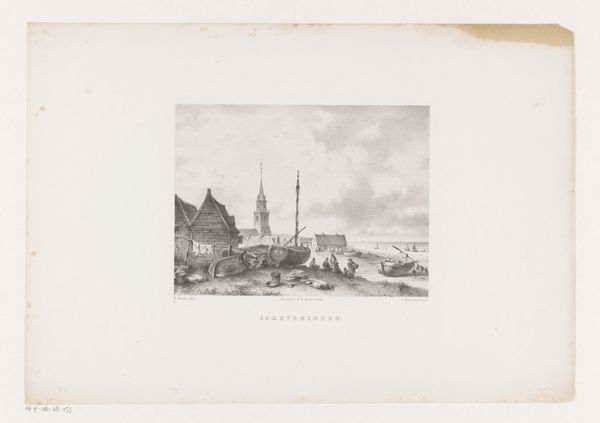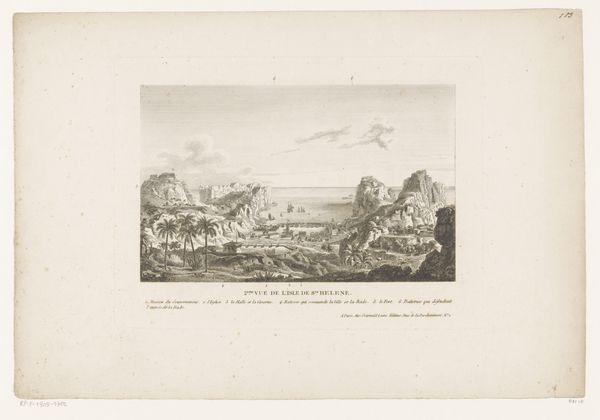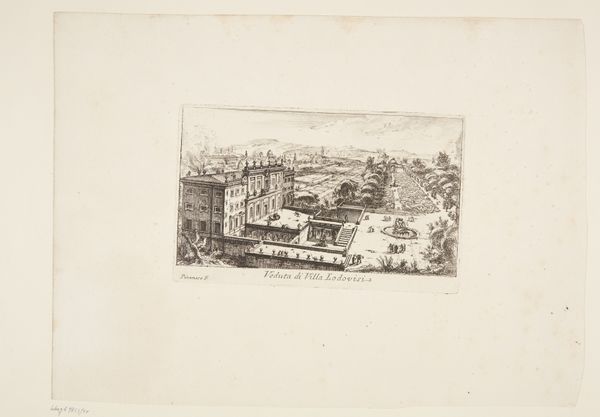
print, etching, paper
# print
#
impressionism
#
etching
#
landscape
#
paper
#
cityscape
#
realism
Dimensions: height 150 mm, width 249 mm
Copyright: Rijks Museum: Open Domain
Curator: This etching from 1880 is entitled "View of Richmond on the Thames" and was created by Arthur Evershed. I'm particularly struck by its impressionistic take on a classic cityscape theme, don’t you agree? Editor: There's an undeniable charm to it. It feels almost dreamlike, this quiet scene, as though glimpsed through a haze. What can you tell me about how this image may reflect England's broader narrative? Curator: Evershed was an active member of the etching revival, a movement fueled by the accessibility of the medium. It became incredibly popular in exhibiting societies, democratizing access to original art. Londoners were starting to demand artwork reflecting the urban and suburban transformations happening all around them. Editor: This resonates powerfully, as Richmond itself was becoming increasingly accessible to the growing middle class through advancements in transportation, wasn't it? Making the image's calm quite poignant because underneath its gentle surface were layers of social change. Curator: Precisely! Evershed’s decision to represent Richmond with such meticulous detail showcases its newfound significance as both a suburban escape and a symbol of London's expanding influence. He includes the architecture as a kind of factual document, and the boats which likely are a key aspect of economy. Editor: Yet, even with that detail, it holds onto a sense of idyllic leisure. In its soft strokes and ethereal light, I also read it as an aspirational space, particularly for working-class folks seeking respite from urban grit, which were themes in literature at that time as well. It is more of a promotion of Richmond than just Richmond at that point, isn't it? Curator: Absolutely, it's a promotional piece—but perhaps a rather quiet one. Its subtle realism presents Richmond as attainable and desirable, mirroring the era's emphasis on the joys of suburban life. The etching’s reproducibility and portability allowed this message to reach a broader audience, fueling desires and shaping perceptions of place. Editor: It’s incredible how an etching can embody so much—aspirations, shifting social structures, and even nascent forms of tourism. And through a close reading like this, art unveils its complex, intersectional role in broader social movements and in people's private aspirations. Curator: Indeed, studying works like this gives insight into art's active role in cultural exchange and shows us how the image plays an integral role in influencing behavior in various societal activities.
Comments
No comments
Be the first to comment and join the conversation on the ultimate creative platform.
